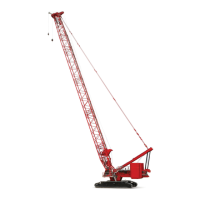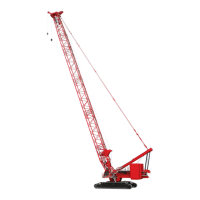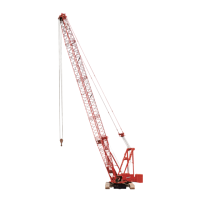Manitowoc Published 11-20-19, Control # 234-19 4-111
MLC300 OPERATOR MANUAL SETUP AND INSTALLATION
3. SLOWLY continue to boom up.
4. If equipped with an upper boom point, stop when the
bottom holes in the upper boom point are aligned with
the holes in the boom top. Install the connecting pins.
Figure 4-67 on page 4-94
.
5. Continue to raise the boom until the lower and upper
boom points are at a convenient height for installing the
load block(s) and hook-or-weight ball.
6. Install the load block(s) and hook-or-weight ball at the
lower and upper boom points.
7. Install the block-up limit components at the boom points.
See Figure 4-73 on page 4-106
.
8. If equipped with a jib, continue to raise the boom until the
jib point is at a convenient height to install the load block
or the hook-or-weight ball.
a. Signal the operator to STOP raising the boom if the
jib pendants get caught on the brackets, pins, or
timber guards. Correct the problem before
continuing.
b. Make sure the jib stop pins are properly installed.
See the #148 Fixed Jib Assembly and Disassembly
Guide at the end of this section.
9. Install the load block or hook-or-weight ball at the jib
point.
10. Install the block-up limit components at the jib point.
11. Continue to boom up until the boom is at an angle that
safely allows the load block(s) and/or hook-and-weight
balls to be lifted.
12. Once the boom is raised:
a. Check all crane functions for proper operation.
b. Check all safety devices for proper operation (see
Section 3 of the MLC300 Operator Manual).
c. Check that the boom stop is adjusted for the proper
maximum boom angle.
d. Check that the RCL/RCI is properly calibrated.
SHIPPING CRANE COMPONENTS
It is the owner/user’s responsibility to ensure the following:
• All trailer loads comply with local, state, and federal
transportation requirements.
• All crane components are properly blocked and secured
so they cannot shift or fall off trailers.
• To avoid damage to components:
Use synthetic tie-downs to secure components as
shown in Figure 4-76
, View A.
If chain tie-downs are used, install protective covering
(such as sections of rubber tire) between the chain and
the component being secured as shown in Figure 4-76
,
View B.
When securing boom sections, wrap the tie-downs over
the chords — never over the lacings. Keep the tie-downs
as close to the blocking as possible (View A) to prevent
bending the chords.
Item Description
1 Synthetic Tie-Down Wrapped Over Boom Chord
2 Chain Tie-Down Wrapped Over Boom Chord
3 Protective Covering (section of rubber tire)
Figure 4-76
View A
View B
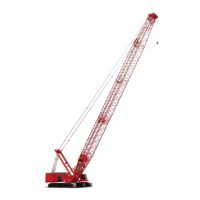
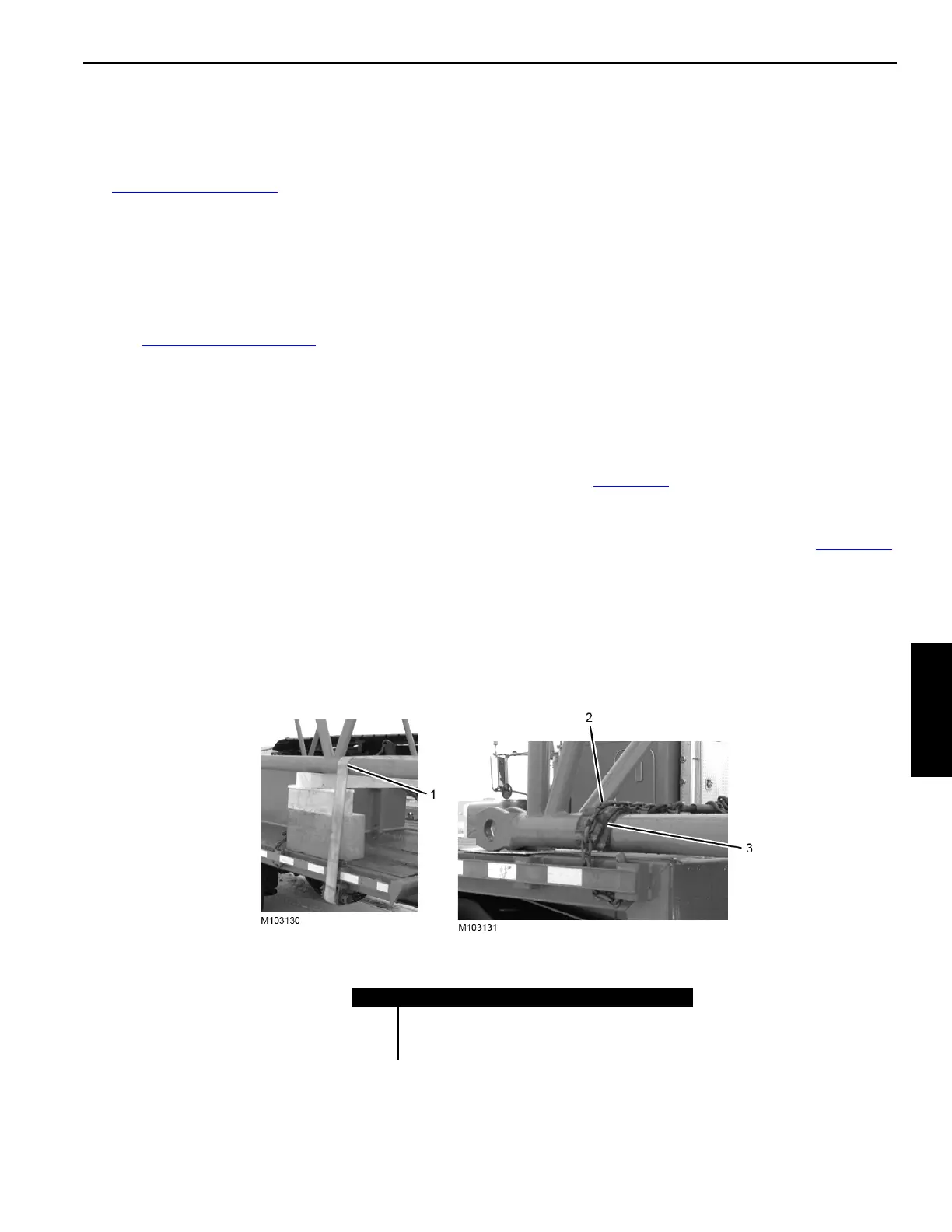